How Often Should You Walk Your Dog?

Any responsible dog parent should understand the importance of daily walks for a dog. Regardless of age, size, and breed, dogs benefit from regular physical activities outdoors as they help dogs stay fit and provide mental stimulation. But how often do dogs need to be walked? What happens when you skip a walk or two?
This blog post will guide you through the basics of dog walking and help you set up the optimal walk schedule for your furry companion.
How Often Should You Walk a Dog?
The generally accepted rule is to walk your dog twice daily, with at least 30 minutes spent outside. However, it’s not black and white, as the daily exercise needed for a dog varies depending on age, breed, size, and health status. In addition, you should fit in the walks in your daily routine. So, owners with more free time can have more walks daily than those with busy schedules.
Let’s review several factors determining the number and duration of walks for different dogs.
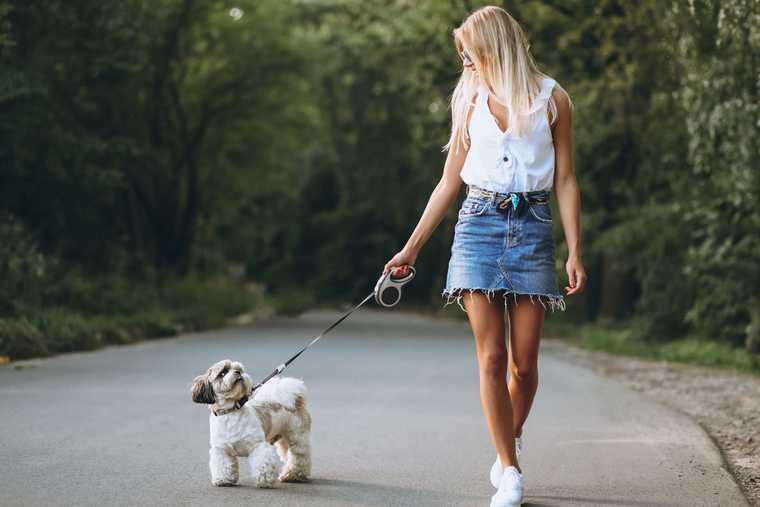
How Often to Walk a Dog Depending on Age
Age is one of the crucial factors influencing how active a dog is. While puppies are famous for their high energy levels, adult and senior dogs display a much calmer demeanor. Dogs of advanced age may also suffer from chronic conditions that cause pain and discomfort, discouraging a dog from too much activity.
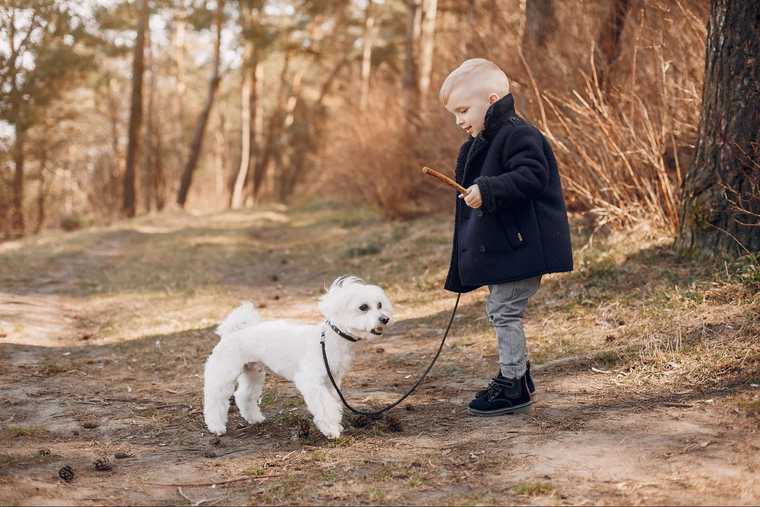
How often to walk a puppy
Puppies are like little whirlwinds of energy and curiosity. For these budding canines, shorter, more frequent walks are the name of the game. Here's a roadmap:
- 3-4 months:
Think of 5 mini-adventures daily, each spanning 10-15 minutes. Puppies have itty-bitty bladders, so regular pit stops are a must.
- 3-6 months:
Start extending those trips to 20-30 minutes, but stick with little and often.
- 6 months and beyond
As your pup matures, you can shift to 2-3 longer outings per day, ranging from 30-60 minutes each. But keep an eye on their comfort and avoid pushing too hard.
Always make sure you not only follow the instructions but pay attention to the individual needs of your puppy.
Is Your Dog Getting Enough Walks?
See how much time your dog spends outside and build a healthy walking routine with our Walking Tracker!
Start Using The Walking Tracker
How often to walk an adult dog
Adult dogs have more stable energy levels, but they're not one-size-fits-all. Most adult dogs will thrive with a daily stroll of 30 minutes to an hour twice daily. However, if the dog isn’t used to such intensity of daily walks, you can start with 10-15 minutes, gradually increasing your dog's time outdoors.
Dogs are creatures of habit. Knowing what to expect during the day reduces their anxiety and improves predictable behavior. That’s why we suggest making consistency of daily walks a point. Pick convenient times and stick to taking your puppy outside at these hours.
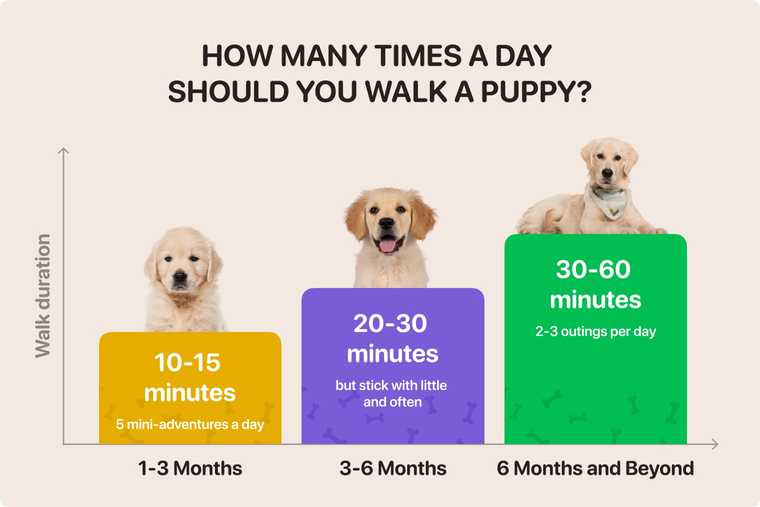
How often to walk a senior dog
Walking a senior dog is about taking it slow and steady. Many older dogs develop critical health conditions that make rigorous exercises painful or dangerous. However, like their younger counterparts, older dogs need daily walks to improve their physical and mental health.
First, get your vet's advice to understand your dog's unique health needs. Aim for shorter, more frequent dog walks, usually around 15 to 30 minutes, adjusted to your dog's pace. Let them take their time to sniff and explore.
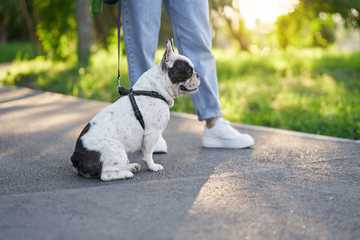
Pay attention to the weather and keep them comfortable. Regular vet check-ups are necessary, and always be ready to adapt your exercise routine to your senior dog's changing needs.
How Often to Walk a Dog Depending on Breed
It’s a well-known fact that your dog’s genetic makeup influences some personality traits. Certain dog's breeds are known for their high energy levels; others are calmer and need less physical exercise during the day. So, it’s essential to consider your dog’s breed when estimating the number and duration of regular walks they require.

Low activity breeds
- Chihuahua
- Dachshund
- French Bulldog
- Goldendoodle
- Shih Tzu
- Yorkshire Terrier
Dogs of this activity level usually need to walk up to 1h a day and don’t generally need extra activities during their walk.

Moderate activity breeds
- American Bulldog
- American Staffordshire Terrier
- Beagle
- Bull Terrier
- Golden Retriever Training
- Labrador Retriever
- Rottweiler
Dogs of this activity level usually need to walk up to 2h a day, which should involve playtime.
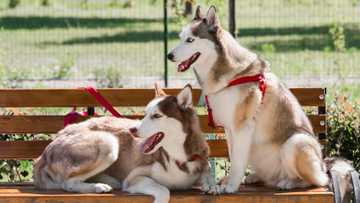
High activity breeds
- American Pit Bull Terrier
- American Cocker Spaniel
- Australian Shepherd
- Belgian Malinois
- Border Collie
- German Shepherd
- Rottweiler
- Siberian Husky
Dogs of this activity level usually need to walk up to 2h a day or more, and the walk should involve extra active training and active games (running, swimming, frisbee, etc).
Sometimes, however, your dog might have individual traits that set them apart from others of their breed and define how much exercise they need. In such instances, it's essential to tailor your training and walking routines to cater to your pet's unique requirements.
Remember, walking your dog is not just about the duration but the quality. Let your dog sniff, explore, and enjoy the world around them. Mental stimulation is as vital as the physical kind.
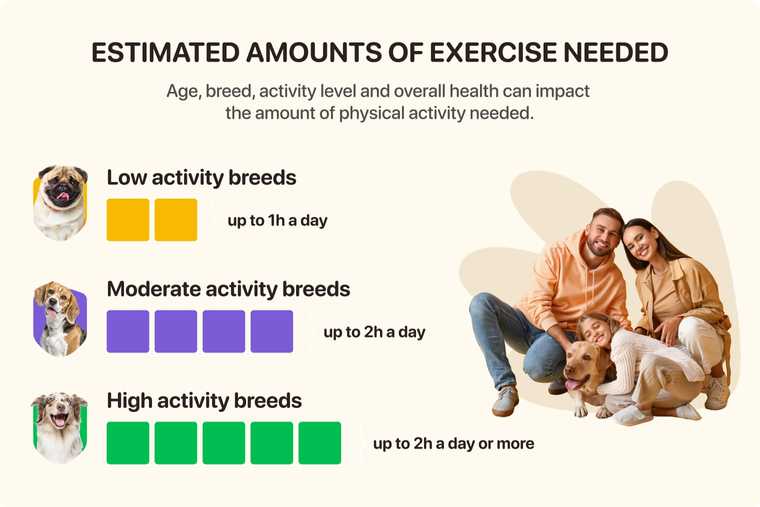
When Should You Walk the Dog?
While there’s no universally ideal time to walk your dog, it’s generally accepted that daily morning and evening dog walks are the best. The reason is that morning and evening hours are typically cooler, especially during spring and summer. The decrease in temperature makes it easier for a dog to stay active and explore the environment.
Morning and evening also suit most pet parents' schedules since many have to work busy hours during the day. Finally, such dog-walking arrangements coincide with most dog’s potty breaks, simplifying the potty training process.
However, it’s worth noting that you can adjust your dog walking routines depending on the weather outside or your schedule on the given day.
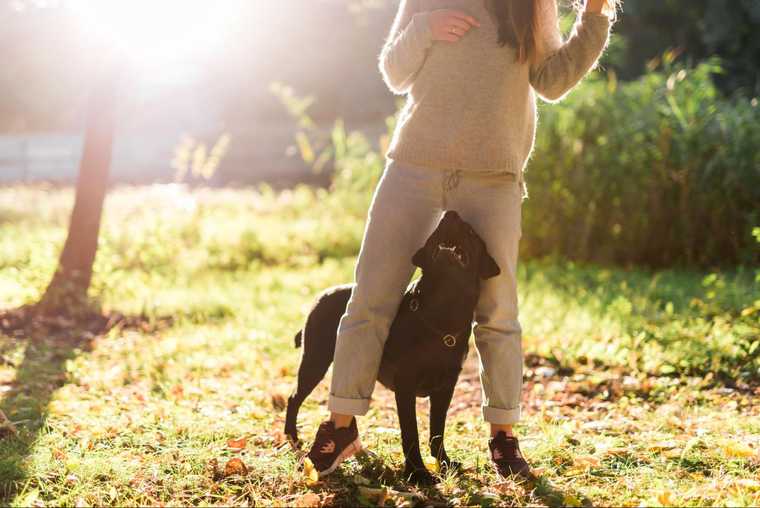
What Should You Do if You Can’t Take a Dog for a Walk?
It happens to the best of us. There are days when you can’t walk your dog correctly due to health issues, bad weather conditions, or busy working schedules. Don’t stress about it; you can compensate for the absence of dog walks by providing other opportunities to exercise.
You can incorporate various indoor games, have short training sessions indoors, or create other mentally stimulating activities. The key is to make your dog exercise their body and brain to recreate the effect that dog walking has.

Note: When you often struggle to meet your dog’s need for daily walks, consider hiring a professional dog walker.
Wrap Up
To wrap up, crafting the perfect walking routine for your dog is a journey of understanding, adaptability, and love. Whether your furry companion is a spirited puppy, an active adult, or a much-loved senior, adjusting their walks to their unique needs ensures a harmonious and healthy relationship.
These daily strolls are more than just exercise; they're precious moments to cherish in the company of your loyal friend. So, clip on that leash, embark on your adventures, and savor every step together.
Frequently Asked Questions

Passionate team dedicated to help pet owners raise safe and obedient dogs, fostering meaningful connections with their furry companions.

Experienced dog trainer with Bachelor of Science Degree in Animal Behavior. Diplomaed dog nutritionist. CFBA Accredited Canine Behaviorist